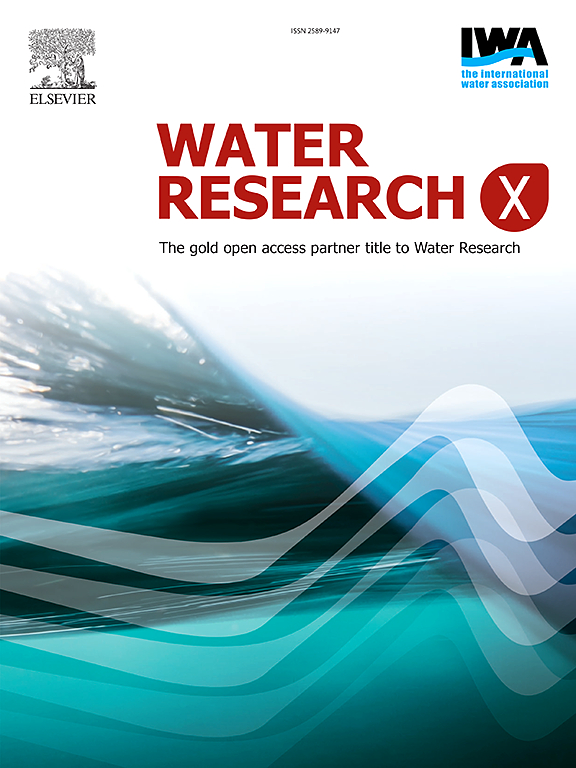High-level nitrogen removal achieved by Feammox-based autotrophic nitrogen conversion
IF 7.2
2区 环境科学与生态学
Q1 ENGINEERING, ENVIRONMENTAL
引用次数: 0
Abstract
Anaerobic ammonium oxidation coupled with Fe(III) reduction (Feammox) is an essential process in the geochemical iron and nitrogen cycling. This study explores Feammox-based nitrogen removal in a continuous laboratory up-flow bioreactor stimulated by intermittently adding 5 mM Fe(OH)3 at intervals of approximately two months. The feed was synthetic wastewater with a relatively low ammonium concentration (∼100 mg N/L), yet without organic carbon in order to test its autotrophic nitrogen removal performance. The operation of this system showed the achievement of high-level ammonium and total nitrogen removal efficiency (∼97% and ∼90% on average, respectively) within four months of operation, along with a relatively practical rate of ∼50 mg N/(L·d). The demand of Fe(Ⅲ) for ammonium removal during the whole bioreactor operation was estimated to be only 0.033, two orders of magnitude less than that calculated based on the Feammox reaction producing nitrogen gas. A series of assays on Fe(II) oxidation with different oxidants (O2, NO2− and NO3−) in abiotic and biotic batch tests further revealed an important role of Fe(II) oxidation processes, likely driven by microbial nitrate reduction and chemical oxygen reduction, in assisting the regeneration of Fe(III) for continuous Feammox-based nitrogen removal. This work demonstrates that Feammox-based autotrophic nitrogen conversion is a potential option for future wastewater treatment.

基于feammox的自养氮转化实现了高水平的氮去除。
厌氧氨氧化耦合铁(III)还原(Feammox)是地球化学铁氮循环的重要过程。本研究探索了在连续实验室上流式生物反应器中,通过间隔约两个月间歇添加5 mM Fe(OH)3来刺激feammox基氮的去除。为了测试其自养脱氮性能,本实验采用氨浓度相对较低(~ 100 mg N/L)的合成废水,不含有机碳。该系统的运行表明,在运行4个月内实现了高水平铵态氮和总氮的去除效率(平均分别为~ 97%和~ 90%),以及相对实用的~ 50 mg N/(L·d)的速率。在整个生物反应器运行过程中,Fe(Ⅲ)的脱铵需要量估计仅为0.033,比基于Feammox反应产氮计算的需要量低两个数量级。在非生物和生物批次试验中,对不同氧化剂(O2、NO2 -和NO3 -)对铁(II)的氧化进行了一系列分析,进一步揭示了铁(II)氧化过程(可能是由微生物硝酸盐还原和化学氧还原驱动的)在帮助铁(III)再生以实现基于feammox的连续脱氮方面的重要作用。这项工作表明,基于feammox的自养氮转化是未来废水处理的潜在选择。
本文章由计算机程序翻译,如有差异,请以英文原文为准。
求助全文
约1分钟内获得全文
求助全文
来源期刊

Water Research X
Environmental Science-Water Science and Technology
CiteScore
12.30
自引率
1.30%
发文量
19
期刊介绍:
Water Research X is a sister journal of Water Research, which follows a Gold Open Access model. It focuses on publishing concise, letter-style research papers, visionary perspectives and editorials, as well as mini-reviews on emerging topics. The Journal invites contributions from researchers worldwide on various aspects of the science and technology related to the human impact on the water cycle, water quality, and its global management.
 求助内容:
求助内容: 应助结果提醒方式:
应助结果提醒方式:


